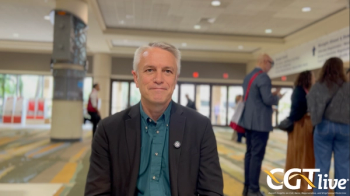
In Search of Rigorous Data on How to Palliate the EGFR Inhibitor–Induced Rash
Epidermal growth factor receptor (EGFR) inhibitors have emerged as important drugs in cancer therapy, providing a proven survival advantage for some patients with non–small-cell lung cancer, colorectal cancer, head and neck cancer, and pancreas cancer.
Epidermal growth factor receptor (EGFR) inhibitors have emerged as important drugs in cancer therapy, providing a proven survival advantage for some patients with non–small-cell lung cancer, colorectal cancer, head and neck cancer, and pancreas cancer.[1,2] Now for the bad news: In over 50% of patients, this class of agents results in a conspicuous and somewhat caustic facial, truncal, and extremity rash that can be severe in as many as 15% and can result in suspension of cancer therapy in over 30%, thereby detracting even further from the physical, emotional, and social well-being of a vulnerable group, who are often already suffering from alopecia, disfigurement, and other cosmetic compromise.[3,4] This rash is the most common adverse event caused by EGFR inhibitors, and it detracts from patients’ quality of life.
In this context, the article by LoRusso is timely, important, and even-handed.[5] This review focuses exclusively and comprehensively on the dermatologic side effects of EGFR inhibitors. It summarizes the clinical manifestations of this cluster of cutaneous side effects, provides insight into underlying rash-related mechanisms, and updates the reader on palliative and preventive interventions that have been tested or anecdotally reported, or that appear promising from a mechanistic standpoint. This article includes a didactic table of treatment options based primarily on anecdotal information. In essence, the current article by LoRusso aptly focuses on a common, distressing cutaneous side effect that to date has been relatively understudied.
A Dearth of Clinical Trial Data
This latter point is an important one and should not go unnoticed: There is a dearth of rigorous, published data on the prevention and palliation of EGFR inhibitor–induced rash. As oncologists, we expect rigorous data from randomized trials to conclude that EGFR inhibitors do in fact yield a survival advantage, and we often mandate that such data be reported prior to our routinely prescribing such agents. Yet one might argue that there are no such rigorous standards when it comes to strategies aimed at palliating or preventing rash.
As LoRusso points out, only two blinded, randomized, controlled trials have been fully published to date-one that looked at oral minocycline and topical tazarotene (Tazorac) and another that looked at oral tetracycline-and yet multiple other far less rigorously tested or completely untested interventions, such as makeup, cleansers, emollients, sunscreen, analgesics, topical calcineurin inhibitors, oral corticosteroids, topical cyclosporine analogs, colloidal oatmeal lotion, ceramides, antihistamines, and avoidance of ultraviolet light, are touted as potentially therapeutic. Oncologists are expected to seek rigorous data to generate useful evidence-based guidelines for the palliation and/or prevention of EGFR inhibitor–induced rash, and to settle for less is to accept a double standard in cancer care.
The Problems With Anecdotal Reports
Why is a heavy reliance on anecdotal reports so problematic? First, these rashes wax and wane in their severity. One-time interventions that appear effective and that may have been utilized immediately before the rash was destined to remit spontaneously may assign false praise for a favorable result. A placebo-controlled intervention-as opposed to an anecdotal report or a small series of observations-allows us to know for sure whether a rash is truly responsive to a certain intervention.
Second, severe rashes may prompt a patient to stop the EGFR inhibitor. Subsequent rash resolution may inaccurately be attributed to the anecdotal intervention as opposed to suspension of the inciting agent. Prospectively tracking patients’ compliance within a clinical trial-not just with the candidate palliative intervention, but also with the inciting agent, the EGFR inhibitor-allows for greater accuracy in attributing rash resolution to the real remedy.
Finally, consistently assessing the extent and severity of rash over time can be challenging, as a variety of grading systems exist. Testing an intervention by means of a prospective clinical trial allows for consistent reporting of endpoints that, in turn, allow for accurate recognition of rash improvement or lack thereof. In the absence of such consistency, spurious conclusions might potentially be drawn about the benefits of a palliative intervention. In short, these three points should lead health-care providers to acknowledge that anecdotes on rash prevention and palliation are of limited value.
More Work Is Needed
Now for the good news: The thoughtful and thorough review from LoRusso provides a summary of benchmark information that outlines the current, state-of-the-art management of rash from EGFR inhibitors, offering also a plethora of anecdotal interventions that might in the future, after rigorous testing, prove to be of value in the palliation or prevention of EGFR inhibitor–induced rash. This review provides the impetus for further study of rash palliation and prevention. Clearly, more work is needed.
Financial Disclosure:The author has no significant financial interest or other relationship with the manufacturers of any products or providers of any service mentioned in this article.
References:
1. Shepherd FA, Rodrigues Pereira J, Ciuleanu T, et al: Erlotinib in previously treated non-small cell lung cancer. N Engl J Med 353:123-132, 2005.
2. Jonker DJ, O’Callaghan CJ, Karpetis CS, et al: Cetuximab for the treatment of colorectal cancer. N Engl J Med 357:2040-2048, 2007.
3. Katz MR, Irish JC, Devins GM, et al: Psychosocial adjustment in head and neck cancer: The impact of disfigurement, gender, and social support. Head Neck 25:103-112, 2003.
4. Hesketh PJ, Batchelor D, Golant M, et al: Chemotherapy-induced alopecia: Psychosocial impact and therapeutic approaches. Support Care Cancer 12:543-549, 2004.
5. LoRusso P: Toward Evidence-Based Management of the Dermatologic Effects of EGFR Inhibitors. Oncology (Williston Park) 23:186-194, 2009.
Newsletter
Stay at the forefront of cutting-edge science with CGT—your direct line to expert insights, breakthrough data, and real-time coverage of the latest advancements in cell and gene therapy.




































